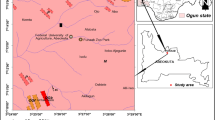Abstract
Due to less visibility, underground facilities such as sewer pipelines are subjected to degradation until a major failure occurs. So, leakage detection of deteriorated underground sewer pipes is necessary to prevent expensive rehabilitation costs. The major causes of the frequent occurrence of ground subsidence and sewer leakage are excessive use of groundwater, reckless exploitation of natural resources, etc. In this study, the aerial thermal imaging (ATI) technique has been used to identify the leakage points in sewer pipelines by analyzing surface thermal diffusion behavior of the ground surface. Leakage is suspected at points of anomalous temperature variation. Then, ground-penetrating radar and closed-circuit television surveys have been carried out to strengthen the suspicion of sewer leakage. Irregular, erratic parabolic-shaped lines are observed at the points where the leakage is suspected through ATI. Finally, the test-pit excavation and simple cone penetration tests have been carried out which confirms the sewer leakage points. The leakage points are confirmed by a greater depth of penetration. The results of the cone penetration test carried out in E-21 and 23-24 sewer pipelines show that the depth of penetration at the leakage points is about 35 cm, which is greater than the depth of penetration at other points. So, it can be concluded that the aerial thermal imaging technique is an effective method to predict leakage in deteriorated underground sewer pipelines.








Similar content being viewed by others
Data Availability
The data used to support the findings of this study are available from the corresponding author upon request.
References
Wirahadikusumah R, Abraham DM, Iseley T, Prasanth RK (1998) Assessment technologies for sewer system rehabilitation. Autom Constr 7(4):259–270
Burn S, Desilva D, Eiswirth M, Hunaidi O, Speers A, Thornton J (1999) Pipe leakage—future challenges and solutions. Pipes Wagga Wagga, Australia
Gokhale S, Graham JA (2004) A new development in locating leaks in sanitary sewers. Tunn Undergr Space Technol 19:85–96
Liu Z, Kleiner Y (2013) State of the art review of inspection technologies for condition assessment of water pipes. Meas J Int Meas Confed 46:1–15
Kumar SS, Abraham DM, Jahanshahi MR, Iseley T, Starr J (2018) Automated defect classification in sewer closed circuit television inspections using deep convolutional neural networks. Autom Constr 91:273–283
Halfawy MR, Hengmeechai J (2014) Efficient algorithm for crack detection in sewer images from closed-circuit television inspections. J Infrastruct Syst 20:1–12
Yang MD, Su TC, Pan NF, Yang YF (2011) Systematic image quality assessment for sewer inspection. Expert Syst Appl 38(3):1766–1776
Hao T, Rogers CDF, Metje N, Chapman DN, Muggleton JM, Foo KY, Wang P, Pennock SR, Atkins PR, Swingler SG et al (2012) Condition assessment of the buried utility service infrastructure. Tunn Undergr Space Technol 28:331–344
Costello SB, Chapman DN, Rogers CDF, Metje N (2007) Underground asset location and condition assessment technologies. Tunn Undergr Space Technol 22:524–542
Grasmueck M, Weger R, Horstmeyer H (2005) Full-resolution 3D GPR imaging. Geophysics 70:12–19
Chen DH, Wimsatt A (2010) Inspection and condition assessment using ground penetrating radar. J Geotech Geoenviron Eng 136:207–214
Evans RD, Frost M, Stonecliffe-Jones M, Dixon N (2008) A review of pavement assessment using ground penetrating radar (GPR). In: 12th International Conference on Ground Penetrating Radar, Birmingham, UK, 16-19 June 2008
Daniels D (2004) Ground penetrating radar, 2nd edn. Institution of Electrical Engineers, London
Jol H (2008) Ground penetrating radar theory and applications. Elsevier, Amsterdam
Kim SW, Kim SY (2005) Comparison of FMCW and pulse type ground-penetrating radar (GPR) for water leakage detection. In: Proceedings of the 2005 IEEE international geoscience and remote sensing symposium (IGARSS), vol 7. IEEE, Seoul, pp 4596–4599
Nakhkash M, Mahmood-Zadeh MR (2004) Water leak detection using ground penetrating radar. In: Proceedings of the tenth international conference ground penetrating radar, GPR 2004, vol 2. Delft, pp 525–528
Hyun SY, Jo YS, Oh HC, Kim SY, Kim YS (2007) The laboratory scaled-down model of a ground-penetrating radar for leak detection of water pipes. Meas Sci Technol 18:2791–2799
Demirci S, Yigit E, Eskidemir IH, Ozdemir C (2012) Ground penetrating radar imaging of water leaks from buried pipes based on back-projection method. NDT E Int 47:35–42
Koo DH, Ariaratnam ST (2006) Innovative method for assessment of underground sewer pipe condition. Autom Constr 15:479–488
Hunaidi O, Giamou P (1998) Ground-penetrating radar for detection of leaks in buried plastic water distribution pipes. In: Proceedings of the 7th international conference on ground penetrating radar, Lawrence, pp 783–786
Oh SJ (2016) Laboratory model test for identification of a rear cavity occurrence mechanism at sewage pipe in sandy ground. Chonnam National University, Gwangju
Kim J, Park S, Kim J, Ahn S, Park S, Kim Y (2017) Accuracy evaluation and terrain model automation of reservoir using unmanned aerial vehicle system. J Korean Soc Agric Eng 59:57–67
Kim J, Park S, Kang H, Yang K, Park S, Kim Y (2018) Leakage risk analysis of reservoir embankment using unmanned aerial vehicle system. J Korean Soc Hazard Mitig 18:13–22
Acknowledgements
This study was supported by 2017 Research Grant from Kangwon National University (No. 520170211).
Author information
Authors and Affiliations
Corresponding author
Rights and permissions
About this article
Cite this article
Park, S., Lim, H., Tamang, B. et al. A Preliminary Study on Leakage Detection of Deteriorated Underground Sewer Pipes Using Aerial Thermal Imaging. Int J Civ Eng 18, 1167–1178 (2020). https://doi.org/10.1007/s40999-020-00521-8
Received:
Revised:
Accepted:
Published:
Issue Date:
DOI: https://doi.org/10.1007/s40999-020-00521-8




